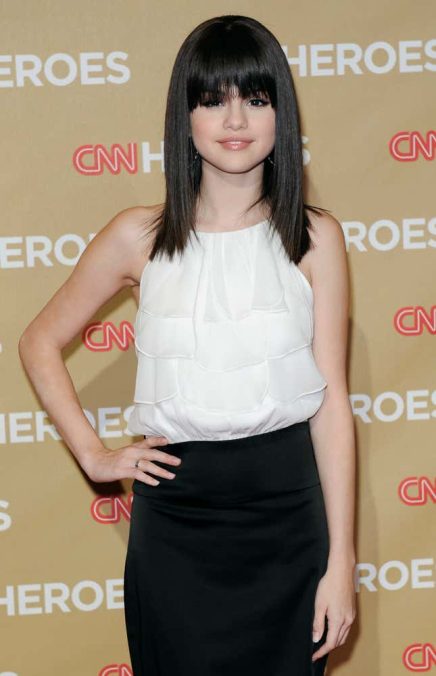The Rise and Fall of the Pop Star Purity Ring
Entertainment
“I just have one thing to say about promise rings,” said Jordin Sparks, then a newly-minted American Idol winner, as she took the stage in 2008 to present at the MTV VMAs. She was gearing up a response to host Russell Brand, who earlier in the night had made a dig at the band the Jonas Brothers for wearing the rings. “Not everybody, guy or girl, wants to be a slut!” Sparks continued. A brief wave of shouted approval followed from the audience. John Legend hung by awkwardly.
This moment happened on TV just 10 years ago, but the mainstream sentiment that the sexual choices for teenagers are either “pure virgin” or “slut,” seems absolutely ancient in 2018, when words like “slut-shaming” and “girl hate” have infiltrated the common vernacular. But if you were a teen in the 2000s, chances are you were inundated with specifically Evangelical Christian messages about how important it was to wait for sex and preserve your virginity. And you didn’t need to go to church to come into contact with these messages. Just paying attention to a VMAs red carpet was enough.
“I’m so lucky I didn’t lose my virginity in the back of a Jeep or something,” Jessica Simpson said, in 2003, about waiting until she was married to have sex for the first time. It was a moment that, just like the saga of Britney Spears’s virginity, was highly covered across tabloid magazines in the early ’00s. Teen pop stars like the Jonas Brothers, Demi Lovato, and Hilary Duff followed her lead, eager to profess how dedicated they were to saving sex for marriage. “I’m going to keep my promise to myself, to my family, and to God,” said Selena Gomez in 2008. “Even at my age, a lot of girls are starting to fall,” Miley Cyrus told People that same year. “And I think if [staying a virgin] is a commitment girls make, that’s great.” Almost all of them wore purity rings on their left ring fingers as a way to advertise their chastity—thin, unadorned silver bands sometimes inscribed with messages like “Love Waits,” the sales of which reportedly increased after Sparks’s VMAs comment.
The purity movement was about conservative evangelicals keeping access to political power, And it was young people, sexually pure young people, who could best make that case
But not for long. The purity class of the ’00s, once heavily concentrated at the teeny bopper palace of Disney, has long given up their rings. And pop culture for the most part has abandoned its voyeuristic obsession with chastity, at least for now. The real reason puritanical sex ed managed to infiltrate Top 40 radio for a bizarre moment in the aughts had less to do with the actual personal beliefs of its stars and far more to do with the conservative political climate that helped create them.
“The purity movement was about conservative evangelicals keeping access to political power,” says Sara Moslener, author of Virgin Nation and professor of religion at Central Michigan University. “And it was young people, sexually pure young people, who could best make that case.”
Moslener explains that to understand how the “purity panic” of the 1990s came to exist and influence pop culture, you have to return to the “sex panic” of the 1980s: the HIV/AIDS crisis and how it led to the institutionalization of sex education. At the time, the Reagan-appointed Surgeon General C. Everett Koop, a pro-life, Christian conservative, emerged from the AIDS crisis urging schools to teach comprehensive sex education. “We have to be as explicit as necessary to get the message across,” he said at the time. “You can’t talk of the dangers of snake poisoning and not mention snakes.” In the ’90s, sex education programs began to increase in schools across America, but at the same time evangelical Christian and old-school conservative groups like the Moral Majority were launching an opposition against it. Instead, they wanted teenagers to learn abstinence.
Purity, as a movement, began to make significant political and financial gains around that time. When President Clinton signed his 1996 welfare reform act (officially titled the Personal Responsibility and Work Opportunity Reconciliation Act) a provision made Congress put aside $50 million per year to go towards abstinence-funded education to prevent “teen pregnancy and illegitimacy” starting in 1998. A 1999 study from the Alan Guttmacher Institute found that 86 percent of school districts with a sex ed policy required promotion of abstinence and that 51 percent of districts required abstinence be taught as the preferred method of birth control.
To understand how the “purity panic” of the 1990s came to exist and influence pop culture, you have to return to the “sex panic” of the 1980s: the HIV/AIDS crisis
But it was President George W. Bush’s Community-Based Abstinence Education (CBAE), established in 2001, that actually brought federal funding to organizations like Silver Ring Thing, a virginity pledge program known for its purity rings. Established in 1995, Silver Ring Thing (which declined to be interviewed for this piece) would receive over $1 million in federal funding over three years—all because it met the criteria of CBAE as a faith-based, pro-abstinence organization.
But while Silver Ring Thing did profit from merchandise, it did not make the bulk of its money from selling the rings, with most selling under $20. According to the company’s federal tax returns, most of Silver Ring Thing’s revenue has come from gifts, grants, contributions, and membership fees, not specifically from merchandise sales or admissions to SRT events. In 2003 when SRT began to receive government money the organization reported a total revenue of $1,234,543, but over half of that came from government contributions.
-

-

-

-

-

-

-

-

-

-

-

-

-

-

-

-

-

-

-

-

-

-

-

-

-

-

-

-

-

-

-

-

-

-

-

-

-

-

-

-











































